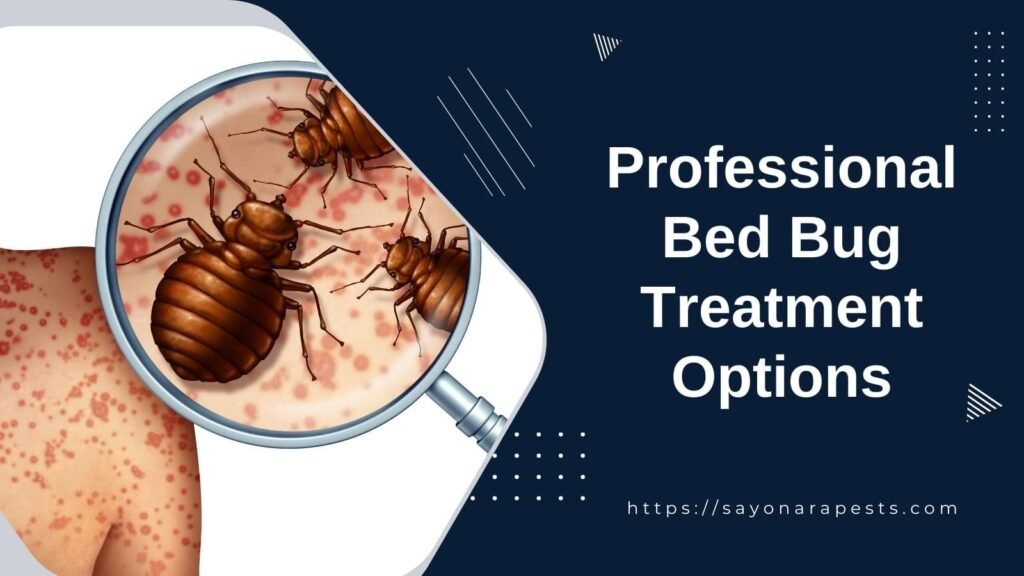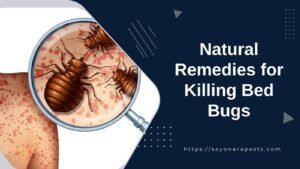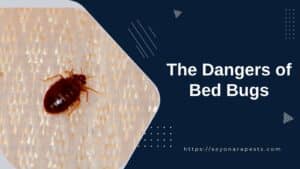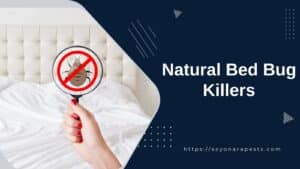Professional Bed Bug Treatment Options
For homeowners, hoteliers, and renters dealing with bed bug infestations, understanding the professional treatment options available is crucial. Professional bed bug treatment ensures effective eradication and can prevent further spread.
Chemical Treatments
Chemical treatments are a common choice for bed bug eradication. The Environmental Protection Agency (EPA) lists several chemicals that are effective against bed bugs, including:
- Pyrethrins and Pyrethroids: These are the most common compounds used to control bed bugs and other indoor pests. They are lethal to bed bugs, but there are resistant strains. In such cases, using a combination product or switching to a different chemical class can improve control.
- Neonicotinoids: These are synthetic forms of nicotine that act on the nervous system, causing nerves to fire continually until they fail. Bed bugs that are resistant to other pesticides will remain susceptible to neonicotinoids due to their different mode of action.
A professional exterminator may also use a product like Phantom, which targets bed bugs and their eggs (Quora). It’s important to note that while chemical treatments can be very effective, they should be administered by professionals due to potential health risks and to ensure proper application.
Non-Chemical Methods
Non-chemical methods are an essential part of an integrated pest management approach. Here are some non-chemical professional bed bug treatments:
- Desiccants: These substances destroy the protective outer coating of bed bugs, causing dehydration and death. Bed bugs cannot develop resistance to desiccants, making them a valuable tool in bed bug control.
- Heat Treatments: Exposing bed bugs to high temperatures is a proven method to eradicate them. Professional exterminators use specialized equipment to heat the infested areas to a temperature lethal to bed bugs. For more information on heat treatments, visit killing bed bugs with heat.
- Freezing: Similar to heat treatments, freezing exposes bed bugs to extreme temperatures, but on the other end of the spectrum. Liquid CO2 or other freezing agents are used to kill bed bugs by professionals. Learn more about freezing as a treatment method at freezing to kill bed bugs.
- Steam Treatments: Steam is an effective, chemical-free way to kill bed bugs and their eggs. Professional-grade steamers can penetrate fabrics and other materials where bed bugs may hide. For insights into steam treatments, refer to using steam to kill bed bugs.
When facing a bed bug infestation, it’s important to consider all available professional bed bug treatment options. Chemical and non-chemical methods each have their advantages, and in many cases, a combination of treatments may be the most effective approach.
Always consult with a licensed pest control professional who can assess the situation and recommend the best course of action for your specific circumstances.
Effective Bed Bug Control
When it comes to eliminating bed bugs, homeowners, hoteliers, and renters alike seek professional bed bug treatment options that are both effective and efficient. Understanding the strengths and limitations of each method is crucial in effective bed bug extermination.
Heat Treatment
Heat treatment stands out as a powerful method for killing bed bugs with heat. It is one of the few strategies that can fully eradicate a bed bug infestation, including the hard-to-kill eggs.
Pest control professionals utilize specialized equipment to raise the temperature of an affected area to a lethal degree for bed bugs, typically between 120-140 degrees Fahrenheit.
This level of heat can penetrate into the nooks and crannies where bed bugs hide, making it an excellent option for thorough extermination.
| Method | Temperature Range | Effectiveness |
|---|---|---|
| Heat Treatment | 120-140°F | High |
Diatomaceous Earth (DE)
Another well-regarded option in the fight against these pests is Diatomaceous Earth (DE). DE is a natural substance that is non-toxic to humans and pets but lethal to bed bugs.
It works by dehydrating the insects upon contact, thanks to its microscopic sharp edges. DE can be strategically applied to areas frequented by bed bugs, such as mattresses and carpets, to effectively disrupt and end infestations .
For more information on using diatomaceous earth to kill bed bugs, you can refer to our in-depth guide.
| Method | Application | Safety |
|---|---|---|
| Diatomaceous Earth (DE) | Mattresses, Carpets, Pet Beds | Non-toxic |
Vacuuming Techniques
Vacuuming is a vital component of any bed bug control strategy. It involves using a vacuum with a powerful suction attachment to remove bed bugs from mattresses, box springs, carpets, and other surfaces where they may reside.
To prevent the spread of the infestation, it is crucial to immediately seal and dispose of the vacuum bag in an outdoor trash container after each use. Regular vacuuming can significantly reduce the bed bug population and complement other treatment methods.
For more tips on vacuuming to eliminate bed bugs, our article provides detailed instructions.
| Technique | Frequency | Disposal |
|---|---|---|
| Vacuuming | Daily | Seal and discard bag outside |
Each of these methods plays a unique role in bed bug control.
Combining heat treatment, DE application, and diligent vacuuming can create a robust approach to not only eliminate the current infestation but also prevent future occurrences.
Homeowners and hospitality managers seeking best bed bug elimination techniques will find these methods to be among the most effective at their disposal.
Cost of Professional Bed Bug Treatment
For homeowners, renters, and hospitality managers, the cost of professional bed bug treatment can be a significant concern.
Understanding the variables that impact the price can help in budgeting and deciding on the most appropriate treatment plan.
Factors Influencing Cost
Several key factors can affect the overall cost of professional bed bug eradication. These include:
- Severity of the Infestation: Larger and more widespread infestations require more extensive treatment, which can increase costs.
- Size of the Area Needing Treatment: The larger the affected area, the more time and resources are needed to treat the space, leading to higher costs.
- Treatment Method: Different methods, such as chemical treatments, heat treatments, or freezing, can vary in price. Combining methods may also be necessary for severe infestations.
- Geographical Location: Prices can vary depending on the region due to labor costs, demand, and local market rates.
- Professional Services vs. DIY: Opting for professional services, although typically more expensive, can be more effective than DIY methods.
- Ancillary Costs: Additional costs may include the replacement of infested furniture or belongings and temporary lodging if the space requires evacuation.
For a more comprehensive view of bed bug treatment options and their costs, individuals can explore various ways to kill bed bugs.
Average Expenses
The expense of professional bed bug treatment varies widely, from as low as $300 to as high as $5,000, with the average cost hovering around $1,500.
This table provides a general overview of potential costs based on treatment type and service:
| Treatment Type | Average Cost Range |
|---|---|
| Chemical Treatments | $300 – $1,000 |
| Heat Treatment | $1,000 – $2,500 |
| Freezing | $500 – $1,500 |
| Professional Exterminator | Up to $2,000 |
Data sourced from Stay Safe and Quora.
It’s important to consider that while the initial cost may seem steep, professional treatment can provide long-term savings by effectively addressing the problem, thereby avoiding repeated infestations.
For more information on professional treatment methods, such as killing bed bugs with heat or using diatomaceous earth to kill bed bugs, visitors can browse related articles.
When choosing a bed bug treatment plan, weighing the factors that influence cost against the potential effectiveness of the treatment is essential.
Homeowners and hospitality professionals are encouraged to consult with pest control experts to determine the best course of action for their specific situation.
Challenges in Bed Bug Eradication
Eradicating bed bugs presents several challenges to homeowners, hoteliers, and renters alike. These pests are known for their resilience and ability to adapt, making professional intervention a crucial step in the fight against infestation.
Resistance to Pesticides
One significant hurdle in bed bug extermination is their growing resistance to pesticides. According to the EPA, there are over 300 products registered for use against bed bugs, falling into seven chemical classes.
Pyrethrins and pyrethroids, common compounds used for indoor pest control, are lethal to bed bugs, but resistant strains have emerged.
To combat this, professionals may use combination products or switch to different chemical classes to enhance control.
Desiccants offer an alternative as they destroy the protective coating on bed bugs, leading to dehydration and death.
Bed bugs cannot develop resistance to desiccants, making them a valuable tool in pest control.
Neonicotinoids, another option, are synthetic forms of nicotine that act on the nervous system. These are particularly effective against bed bugs resistant to other pesticides due to their unique mode of action.
Spread of Infestations
The spread of bed bug infestations is another major challenge. These pests are not only found in homes but also in a variety of public spaces, making them a concern for many businesses and facilities.
They can easily hitch a ride on luggage, clothing, or furniture and establish new colonies in environments like hotels, Airbnb properties, libraries, restaurants, laundromats, shelters, campgrounds, prisons, ambulances, zoos, museums, theaters, stadiums, and airports.
The elusive nature of bed bugs adds to the difficulty of controlling the spread. They are adept at hiding in small crevices and can go without feeding for months.
Early detection is key to preventing a full-blown infestation, as is professional treatment, which often includes heat treatment, vacuuming, and the use of desiccants like diatomaceous earth.
Overall, the challenges in bed bug eradication underscore the importance of understanding bed bug behavior, staying informed about treatment options, and seeking professional bed bug treatment options when necessary.
DIY Bed Bug Control
While professional assistance is often recommended for bed bug eradication, some homeowners and renters may opt for do-it-yourself methods to address minor infestations.
DIY bed bug control can be a first step in tackling the problem before turning to professional bed bug treatment options.
Do-It-Yourself Methods
There are several DIY approaches that can be employed to control bed bugs:
- Heat Treatment: This method involves using heat to kill bed bugs. Items that can be laundered should be washed in hot water and dried on the highest dryer setting. For larger items, killing bed bugs with heat can be done using steam cleaners.
- Diatomaceous Earth (DE): A natural product, DE can be used to create barriers in areas where bed bugs are likely to hide. It works by dehydrating the insects (using diatomaceous earth to kill bed bugs).
- Vacuuming: Regular and thorough vacuuming can help reduce the number of bed bugs, especially when targeting their common hideouts. It is important to promptly seal and dispose of the vacuum bag after cleaning (vacuuming to eliminate bed bugs).
- Encasements: Encasing mattresses and box springs with a bed bug-proof cover can trap and starve any existing bed bugs.
- Isolation: Using Climbup® Interceptor cups under bed legs can prevent bed bugs from climbing up onto the bed from the floor.
Caution with Pesticides
When it comes to pesticides, caution is critical. Pesticides alone are not a comprehensive solution for bed bugs. Many pesticides, including those available to consumers, have only moderate effectiveness against these pests.
Moreover, aerosol “bug bombs” or “fumigators” are mostly ineffective as they fail to reach the bed bugs concealed in hidden areas.
Pesticides should always be used responsibly and in accordance with their labeling. Improper use can lead to poor control of the bed bug problem and may pose health risks.
Never use a pesticide indoors unless the product’s label specifically states that it is safe for indoor use. Misuse of pesticides is not only illegal but also potentially harmful to humans and pets.
Additionally, it’s worth noting that DIY or natural products, such as essential oils, ultrasonic electronic units, and certain aerosol repellents, have been found to be ineffective in eliminating bed bug infestations.
Over-the-counter bed bug sprays may kill on contact but often do not reach the more concealed insects.
For those considering DIY methods, it’s essential to combine multiple approaches for a more effective outcome, and to always start with non-chemical measures.
If the infestation persists or worsens, seeking professional intervention benefits may be the most reliable course of action.
Bed Bug Treatment Best Practices
Ensuring the effective management of a bed bug infestation involves more than just eliminating the pests; it requires strategic planning and best practices, from early detection to professional intervention.
Early Detection
Early detection of bed bugs is perhaps the most critical element in preventing a full-blown infestation. Bed bugs are notorious for their stealthy behavior, and their ability to go unnoticed for long periods only exacerbates the issue.
They can survive for months without a meal and are known to thrive even in unoccupied environments, lying in wait for favorable condition.
To catch an infestation in its early stages, it’s important to:
- Regularly inspect sleeping areas, including mattresses, bed frames, and box springs, for signs of bed bugs.
- Look for indicators of bed bugs such as rust-colored spots on bedding, shed skins, and the bugs themselves.
- Use protective encasements on mattresses and box springs to make signs of bed bugs more evident.
- Be vigilant when traveling, inspecting hotel rooms (how to check for bed bugs in hotel rooms) and ensuring luggage is free from hitchhiking pests upon return.
Professional Intervention Benefits
When it comes to eradicating bed bugs, professional intervention offers several advantages over do-it-yourself (DIY) methods.
While some may attempt to tackle the problem on their own, the expertise and methods used by professionals are often necessary for complete elimination, especially in severe cases.
Professional bed bug treatments typically involve a multi-faceted approach, including:
- A thorough inspection to identify all affected areas within the premises.
- The application of effective bed bug extermination methods, which may include heat treatment, diatomaceous earth, and insecticides.
- Follow-up visits to ensure that the infestation has been fully resolved and to prevent a resurgence.
Professionals are equipped with the knowledge to recognize different stages of bed bug life cycles, understand their behavior, and have access to advanced tools and treatments not available to the general public.
This expertise significantly increases the chances of successful bed bug eradication on the first attempt, saving both time and money in the long run.
Furthermore, professionals can provide tailored advice on preventing bed bugs from spreading and can educate homeowners and renters on common misconceptions about bed bugs to prevent future infestations.
In conclusion, while early detection is crucial in the fight against bed bugs, the benefits of professional intervention cannot be overstated. It ensures a comprehensive approach to bed bug eradication that DIY methods simply cannot match.




